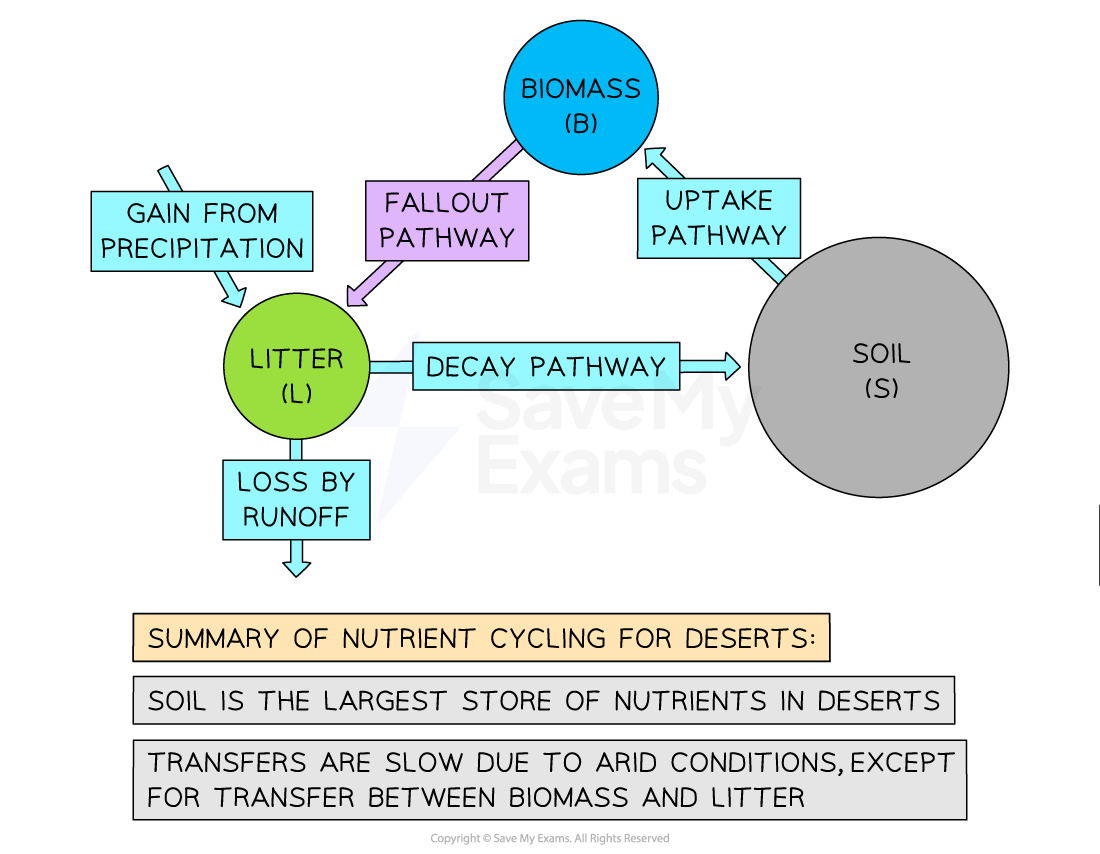Desert Climate
- Deserts share a number of climatic characteristics
- Located in zones of high atmospheric pressure due to sinking, warm, dry air
- Arid regions have a large diurnal (daily) range in temperature (up to 30°C) due to a lack of cloud cover
- Intense solar radiation heats the ground and warms the air above it, preventing the formation of clouds
- At night, the heat escapes under the clear skies
- Distance from the coasts – land heats and cools faster inland, providing a greater range of temperature
- Height above sea level – the higher the desert the cooler it will be
- Semi-arid deserts have seasonal rainfall
- The mean annual temperature of most desert margins is lower than in deserts between 10-20°C
- The diurnal range is less extreme (up to15°C)
Other climatic characteristics
- Deserts have strong winds and sandstorms
- Low latitude (sun overhead) provides intense convective activity, which triggers thunderstorms
- Proximity to cool ocean currents depresses temperatures and produces sea fog
- Albedo – salt-encrusted, dried-out lakes reflect insolation and are, therefore, cooler



